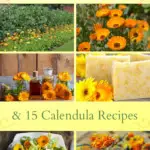
Calendula (Calendula officinalis), also known as Pot Marigold, is a great plant for many gardens.
Whether you are an experienced gardener, or a true beginner, calendula are easy to grow. In fact, they are great low-maintenance plants – that quite frankly thrive on neglect.
As we will discuss in this article, there are a great many reasons to grow them. They not only cheer up your outside spaces with their sunny color.
They also have a range of practical uses in your garden, in your kitchen and around your home.
How To Grow Calendula
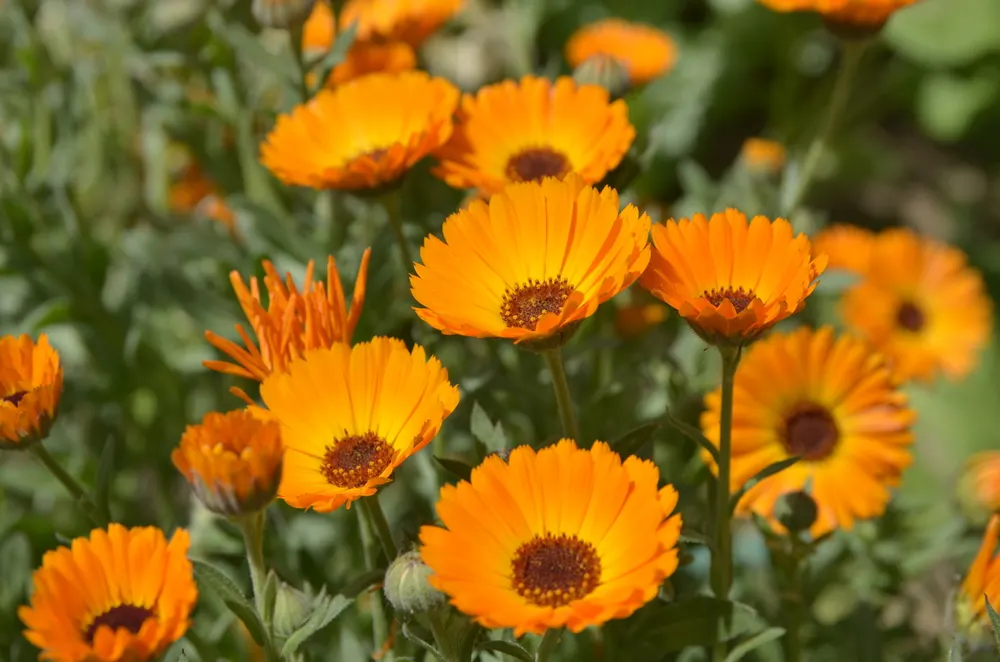
Calendula are perennial, though in most areas where they are grown are treated as annual or biennial plants. They will not generally survive hard frosts.
They form bold heads of vivid orange flowers that are daisy-like in form on fast-growing plants of bushy habit.
Gardeners sometimes sow calendula seeds indoors a few weeks before the last frost date in their area (though grow lights may be required).
You can then plant them out once the weather warms.
Alternatively, you can direct sow them in the garden after all risk of frost has passed in spring. In warmer climes, seeds can also be direct sown in fall for winter colour.
It is also popular, however, to choose to buy calendula as bedding plants.
You can then place these bedding plants to grow on in containers or in-ground growing areas.
Once you have some calendula in your garden, it will tend to self-seed readily if grown in the right conditions. This means that if calendula is provided with the appropriate environment, it will generally persist there for years with little effort from the gardener.
Though not usually truly perennial, therefore, it can sometimes find a home in a perennial polyculture growing area.
Where to Place Calendula
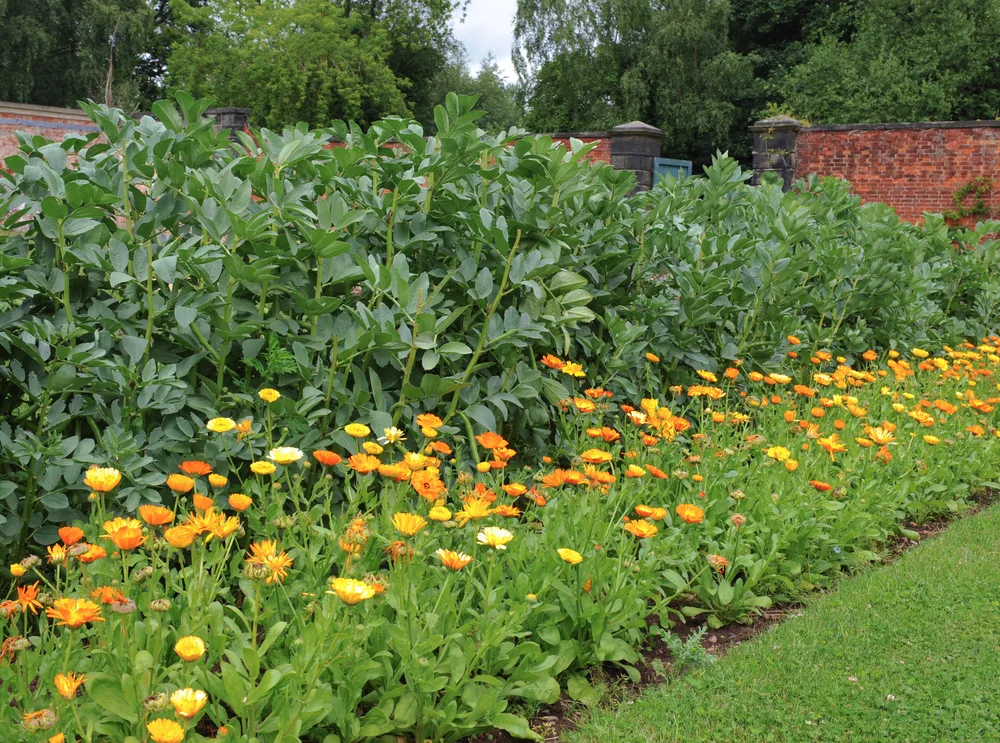
Calendula is generally considered as an ornamental plant, and placed in a flower bed or border, or in containers.
But it can also find a role in other parts of the garden – for example, as a companion plant to fruits or vegetables, or on the sunny fringes of a forest garden.
Though it is a stalwart of the typical informal, cottage-style garden, it can also fit in with a range of other garden design styles.
Calendula will do best in a sunny or lightly shaded position.
It will do well in any well-drained soil, though a good loam is ideal. But it will tolerate a range of different soil types and a pH anywhere between 4.5 and 8.3.
Interestingly, these plants will actually flower most prolifically when grown in a low-nutrient setting, with lower soil fertility.
Caring for Calendula
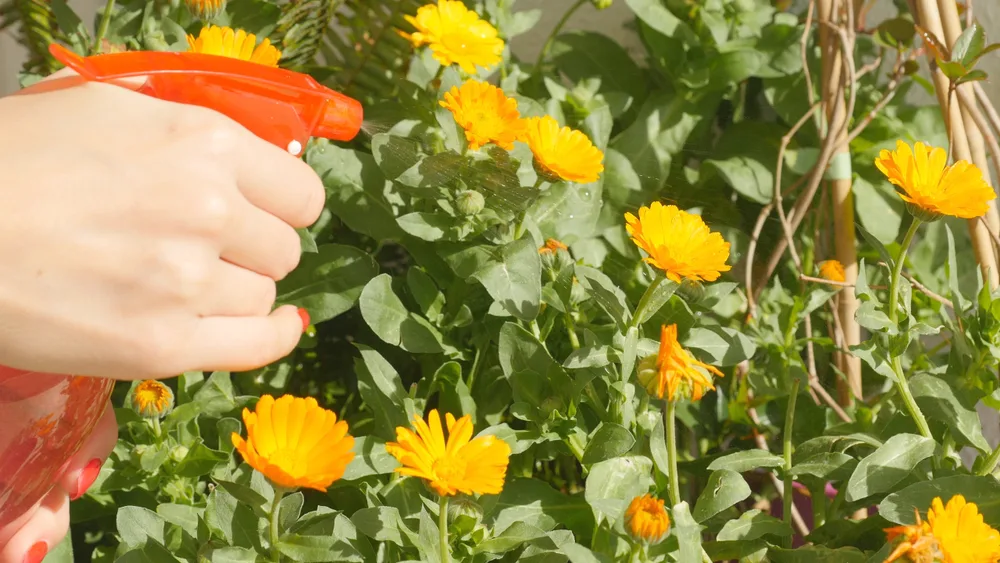
When grown in a suitable location, calendula will require little care. The plants will bloom from June right through to November and sometimes even beyond in certain areas.
Deadhead your calendula regularly (perhaps also harvesting some calendula flowers). You should then be treated to blooms over a long period.
Pinch out growing tips to keep the plants bushy and prevent the formation of too much straggly growth.
Take care not to over-water and avoid fertilizers or other measures that will add too many nutrients to the soil around your plants.
Remember, when caring for calendula, that less is more.
10 Reasons To Grow Calendula in Your Garden
There are a great many reasons to begin growing calendula in your garden. You’ll find ten of the top reasons to grow these useful and attractive flowers below:
1. To Attract Beneficial Wildlife
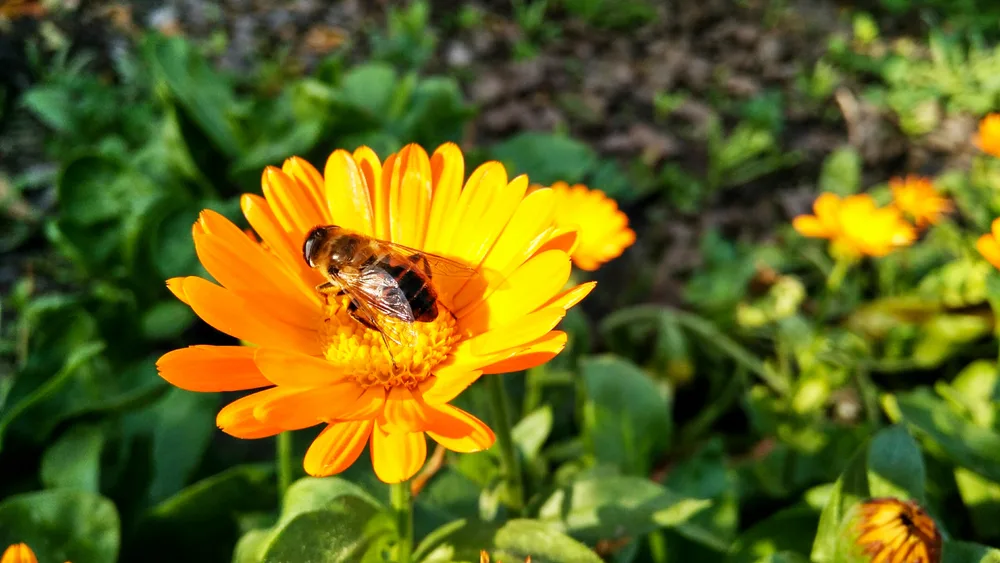
Calendula are well known as an excellent plant for a wildlife garden. Their vibrant flowers attract bees, other pollinators, and a wide range of other insects.
Since they bloom for such a long time, they provide as consistent source of nectar and pollen throughout a big chunk of the year.
In addition to attracting pollinators, calendula also serves as a food source for a number of lepidoptera species, and so will draw moths and butterflies to your garden.
By helping to increase biodiversity, growing calendula can make it easier for you to garden organically. Growing this useful plant can aid in creating a thriving and resilient garden ecosystem.
2. As a Companion Plant For Your Fruits and Veggies
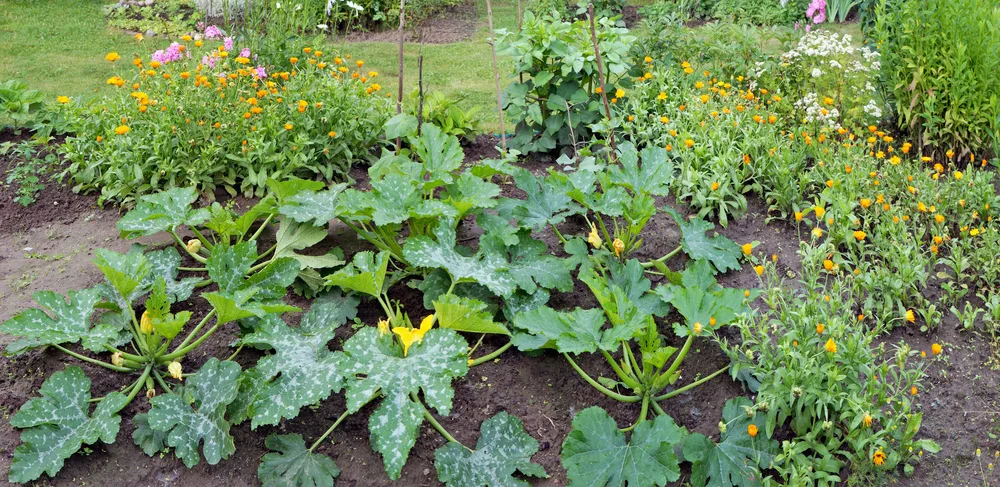
Of course, attracting beneficial wildlife is not only good for the garden ecosystem as a whole, but the wildlife itself.
By bringing in beneficial wildlife, calendula is also a great companion plant.
It helps the fruits and vegetables you grow by attracting pollinators. It also helps by attracting predatory insects like ladybugs, lacewings and hoverflies that help keep pest numbers down.
What is more, these plants also repel whitefly from tomatoes, and act as a trap crop to lure aphids away from other crops.
What is more, calendula can also aid other plants when used as a living mulch or cover crop. It has thick, fibrous roots and grows in thick patches and so can cover and protect the soil.
It can be used either between other crops or during gaps in crop rotation.
3. For a Long-Lasting Display of Blooms
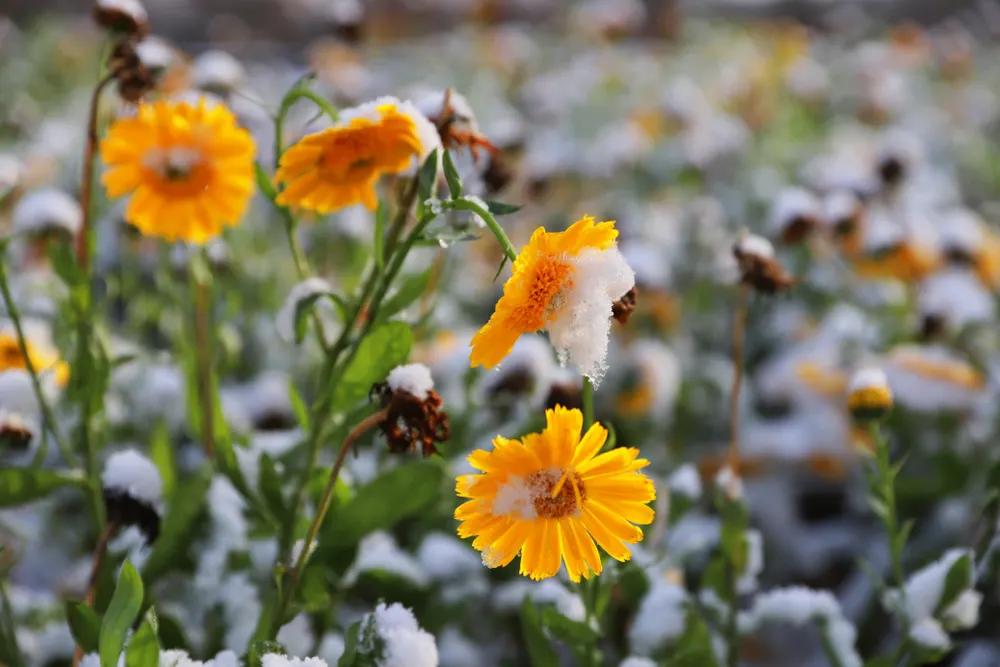
One of the goals in an ornamental garden is year round visual interest.
Since calendula blooms over such a long period of time, it can be a great plant to help you meet this goal. The bright and cheerful flowers can really brighten up the garden over the summer and fall.
The long flowering period is not just good for the wildlife which enjoys the garden. It is great for human inhabitants too.
4. To Speed Up Composting
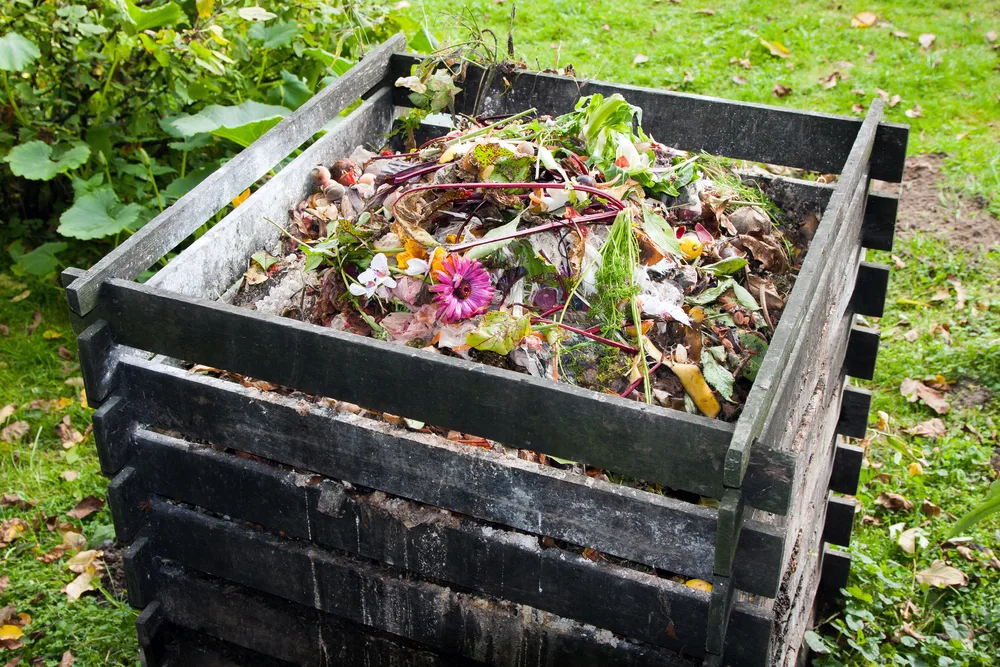
Interestingly, calendula can be used as part of a herbal mix which acts as a compost activator.
The Quick return composting system was introduced by Maye E. Bruce in 1935. It involves using six common herbs in honey as a compost activator.
The six herbs commonly used are nettle, dandelion, chamomile, yarrow, valerian and oak bark. However, calendula is often suggested as an alternative for use in a compost activator.
Compost activators speed up the composting process and make it easier and quicker to return nutrients to the garden system.
5. For Cut Flower Displays
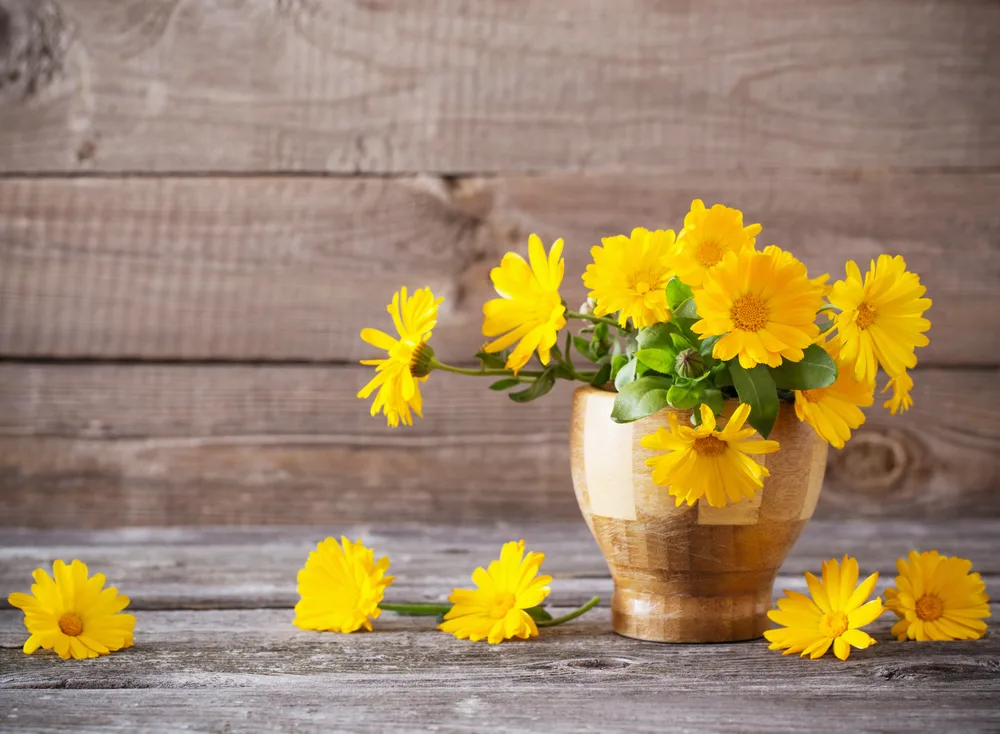
You don’t just have to enjoy calendula flowers in your garden. You can also cut the blooms and use them in fresh flower displays inside your home.
In India, calendula flowers are sacred and are used to decorate the statues of Hindu deities for hundreds of years.
But whatever your religious persuasion, the flowers can be hugely decorative, and can be used for numerous floral arrangements – in vases or garlanded, or in a range of other ways.
They are great for bringing warm, sunny tones into your home.
6. For Herbal Medicine
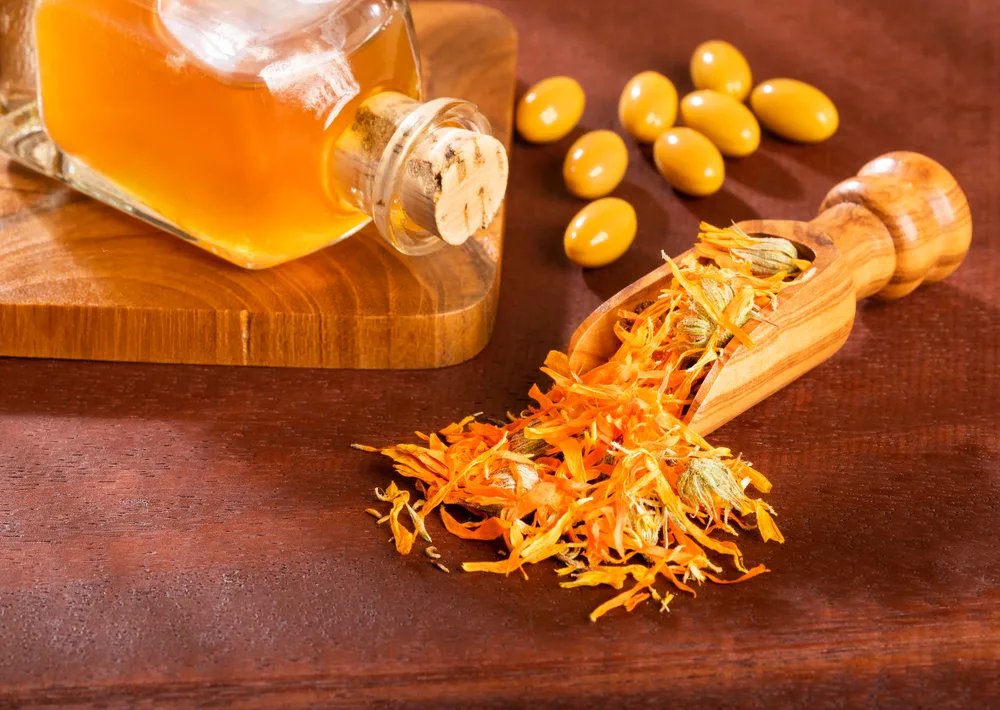
Calendula also have a long history of use in herbal medicine. The plant has a range of beneficial properties.
It is anti-inflammatory and antiseptic, which can be used to soothe and heal skin, and cleanses and detoxifies when taken internally.
You can use the flowers fresh or dried in a wide range of herbal preparations and domestic remedies.
7. To Make a Natural Dye
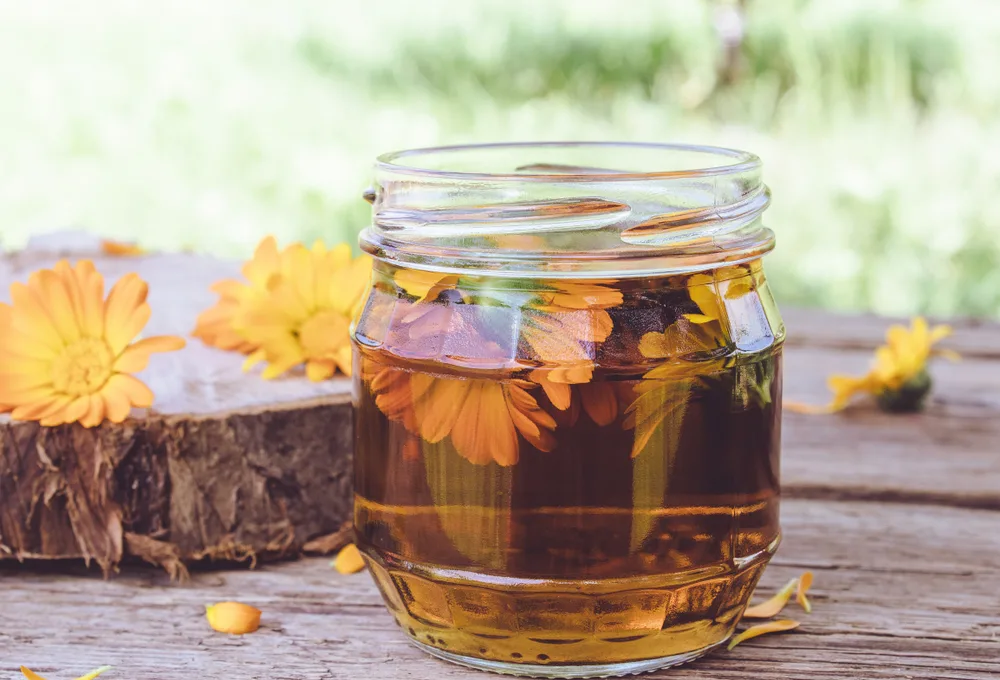
The flowers can also be boiled to make a natural yellow dye. The dye can have culinary applications, as an alternative to saffron for coloring food.
It was traditionally used to add color to butters and cheeses.
The dye can also add golden tints to hair, and can also be used, alone or with the addition of a mordant to set the dye, to color natural fabrics.
8. To Help Determine What Weather is To Come
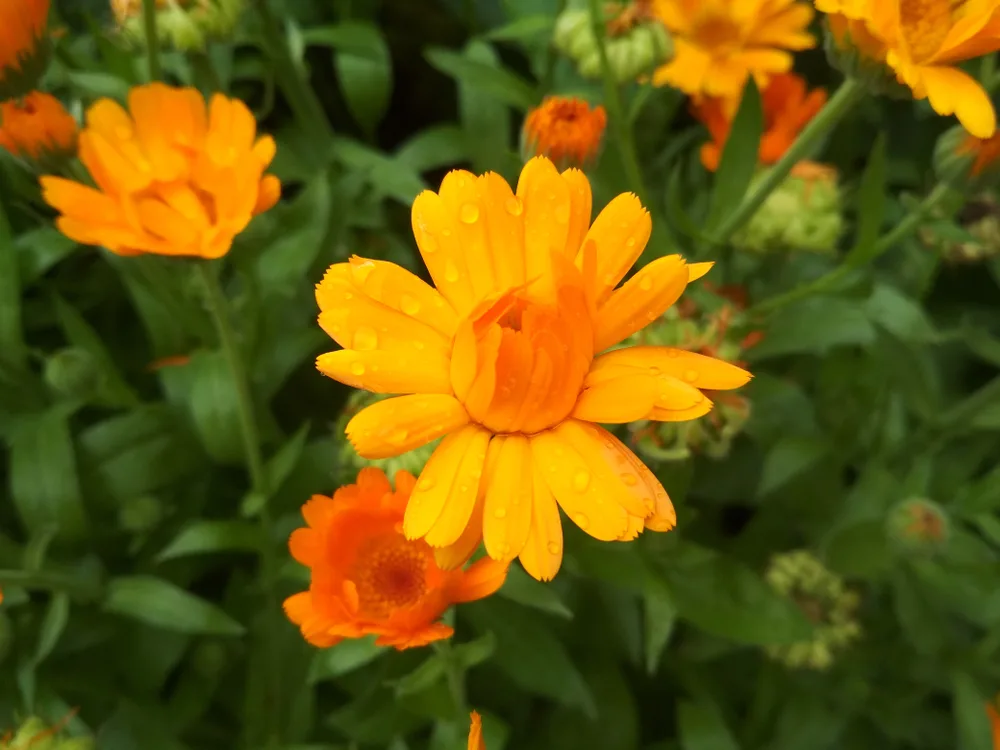
When you spend a lot of time in the garden, it can be useful to observe natural signs.
A number of plants can give cues that suggest a weather change is on the way. Calendula is one of those plants.
Interestingly, the blooms will often close up in humid conditions, and in certain areas, can give an indication that wet weather could be coming.
Taken along with other observations, this can help gardeners to predict what weather is on its way.
9. To Use in Your Kitchen
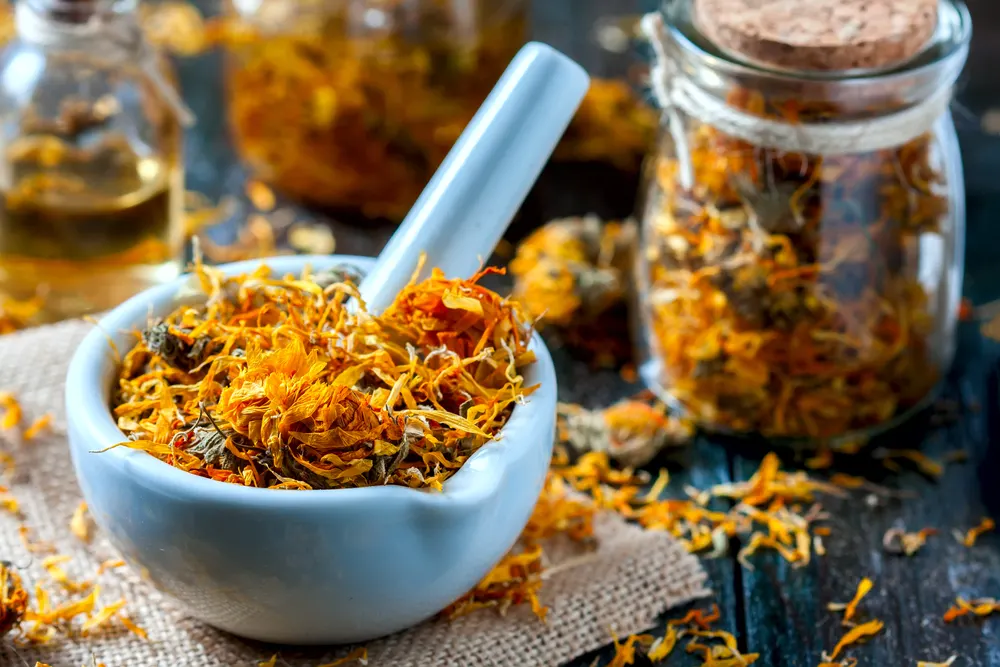
Calendula is not only used to color food but also to impart flavor. The leaves are rich in vitamins and minerals, similar to the dandelion, and can be eaten raw.
Most commonly, however, the petals are the part of the plant that is used for culinary purposes. They are used fresh, or dried.
When dried, they have a more concentrated flavor. A few examples of the culinary uses of this flower can be found in the recipes section, below.
10. To Make Cleaning and Cosmetic Products
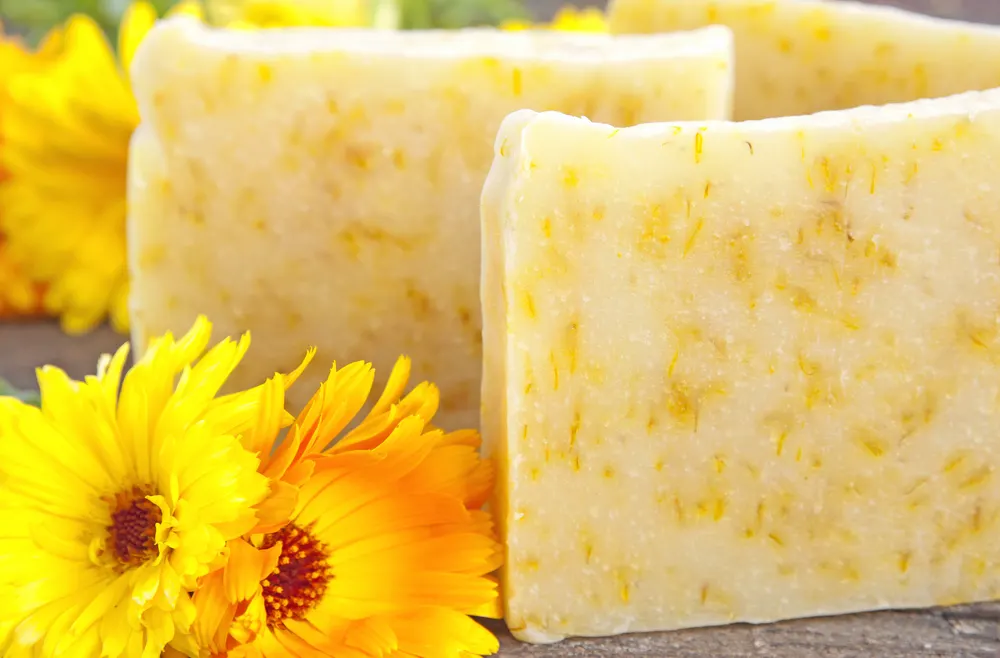
Perhaps the most useful thing about calendula from a human perspective is the plants potential as an ingredient for cleaning and cosmetic products.
The flowers’ soothing and healing properties, along with their color and other properties make them an incredibly useful addition to a range of DIY, natural balms, lotions, and beauty products.
Again, you will find a number of interesting ways to use this plant in the recipes section below.
Calendula Recipes
By now, you should have a very good idea about why you should be growing calendula in your garden. But what should you do with the flowers once you have grown them?
Here are a 15 of the top ideas from around the web:
1. Salad with Calendula Petals
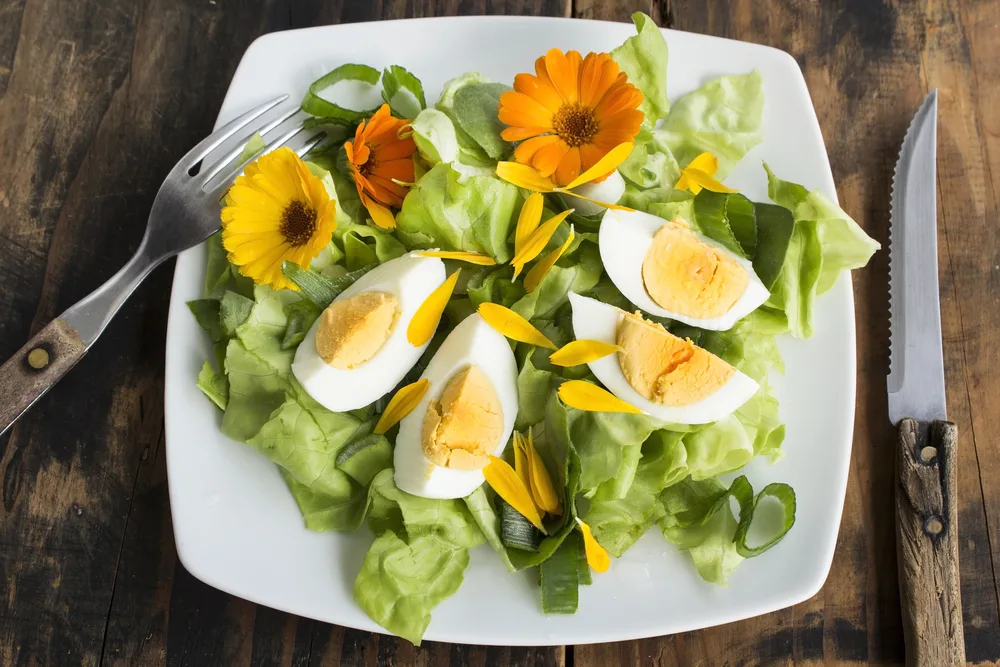
Calendula petals do not have the strongest of flavors, but they are one of the most cheering of edible flowers and can brighten up and enliven a range of dishes.
In particular, the petals lend themselves to inclusion in a wide range of salads. You can find one example at the link below.
You can extend this idea to add calendula petals as a garnish on an even wider range of warm and cold dishes.
Confetti Salad with Calendula Petals @ almanac.com
2. Sunshine Soup With Calendulas
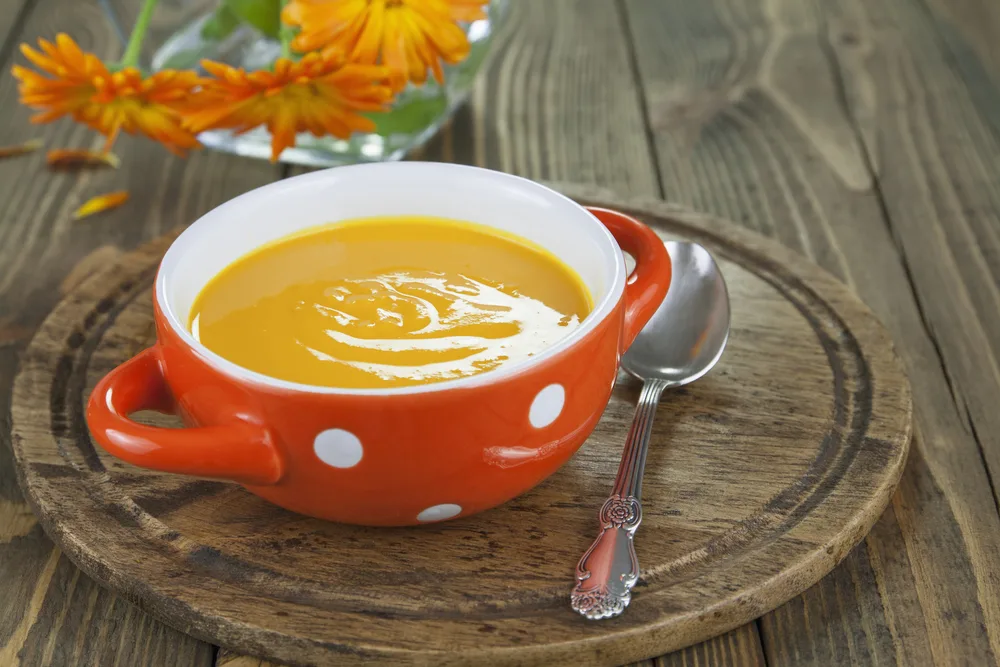
As mentioned above, the petals can impart a yellow coloring to food.
The recipe found through the link below is one great example, which includes them as an ingredient in a soup that can bring sunshine in fall, or in the deep mid-winter.
But this is only one of the many warm dishes that could be enhanced by the addition of this useful ingredient.
Sunshine Soup with Calendula @ flowerfolkherbs.com
3. Calendula Cupcake Sprinkles
Calendula petals are not only used in savory dishes. You can also use them in a range of cakes, puddings and other sweet treats.
You can simply add some dried petals to cupcakes or other baked goods.
However, you can also make use of calendula’s decorative properties as well as its flavor.
For example, you can use calendula to make some cheery yellow cupcake sprinkles as described in the link below.
Naturally Colored Decorating Sugar @ thenerdyfarmwife.com
4. Calendula Tea
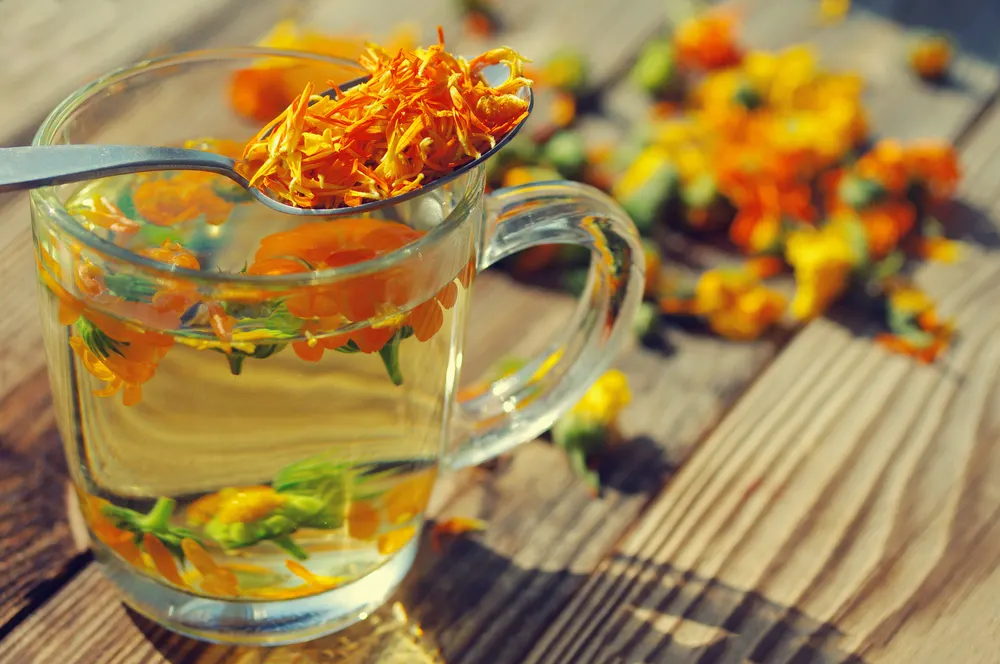
Calendula flowers or calendula petals can also be used to make a tea.
You can not only imbibe this tea for flavor and for its medicinal properties, you can also use it topically in a range of different ways.
You can use it on people (including children, though not recommended for pregnant women) but also on pets and livestock.
(Note: while most people do not have any problems, there is low potential for sensitization and contact dermatitis. Some people have allergies to the daisy family and topical application could cause a rash. Check on a small area before applying more broadly.)
For more details on making and using calendula tea, check out the link below:
14 Uses for Calendula Tea @ thenerdyhousewife.com
5. Infused Oil
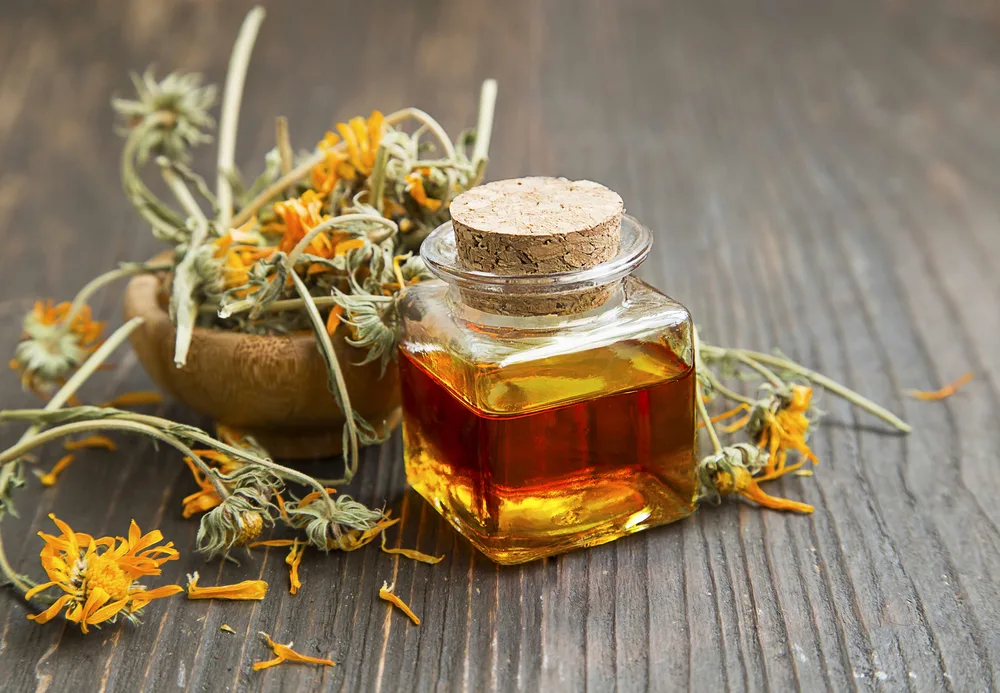
You can bring calendula’s useful properties to bear in a carrier oil. Make an infused oil by steeping the petals in olive oil.
It can either be ingested, or used topically in a wide range of different ways.
Check out the website below for details of how to make calendula infused oil, and how to use it.
How to Make Calendula Oil @ mommypotamus.com
6. Calendula Salve
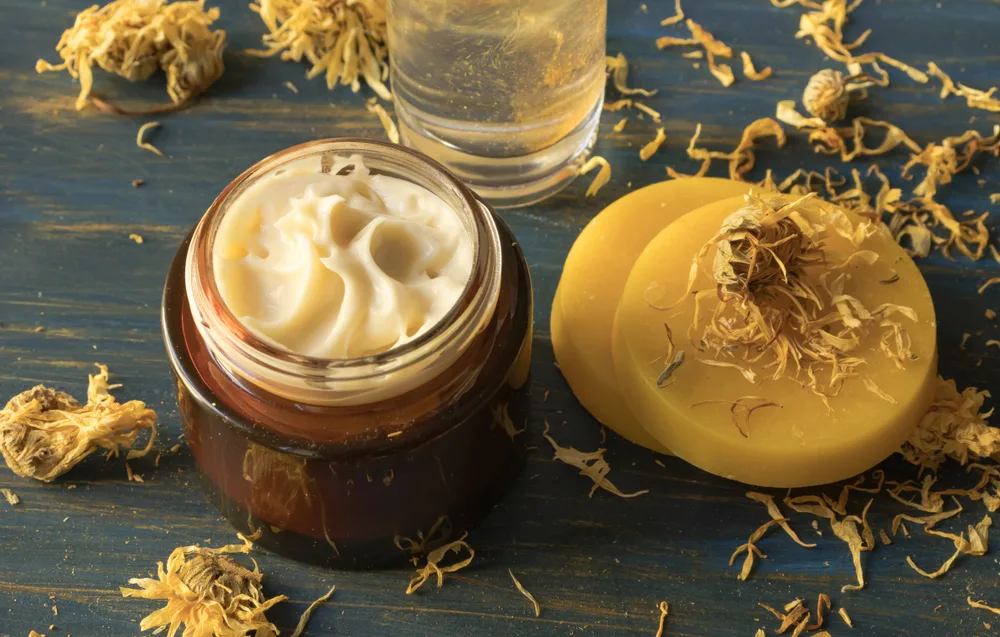
To apply the soothing substance to your skin, you can also use the flowers to make a soothing salve.
Make the salve by combining the flower heads, a carrier oil (such as olive oil) and natural beeswax.
Apply it to sore, itchy or damaged skin and it is efficacious in treating a range of different conditions – from sunburn to diaper rash, from cuts and abrasions to sores, ulcers, rashes and fungal infections.
How to Make Calendula Salve @ permaculture.co.uk
7. Lotion Bars
Moisturising, soothing and healing, lotion bars are another way to use calendula’s beneficial properties on your skin.
There are a number of different recipes out there for making lotion bars with calendula. But all share in common the idea of creating bars that can be slid over the skin easily, and moisturise without leaving a greasy feeling.
Calendula Summer Lotion Bars Recipe @ gardentherapy.ca
8. Calendula Soap
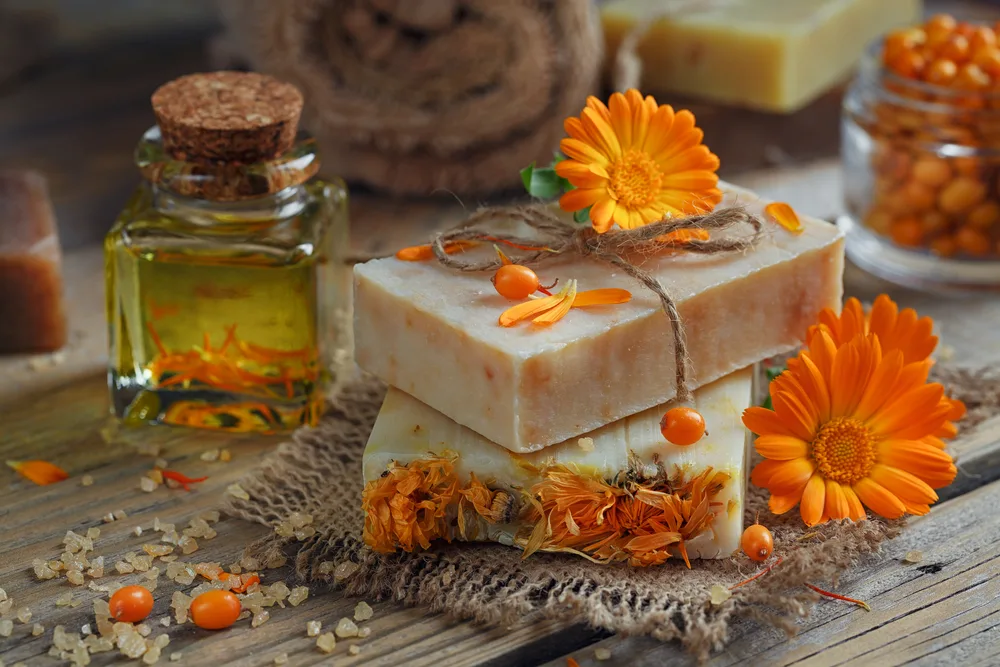
You could also consider trying a little soap making and creating your own home-made calendula soap.
Calendula petals retain their colour and beneficial properties when used in cold-process soaps, and again, there are a range of different recipes to choose from.
Calendula Soap @ lovelygreens.com
9. Cold and Flu Elixir
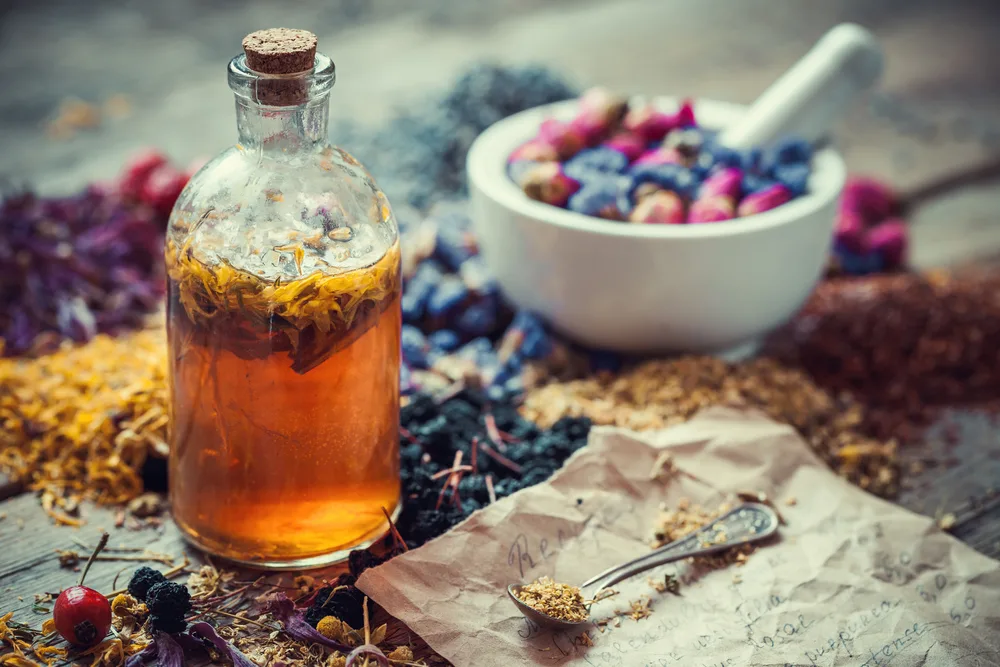
As discussed above, one of the reasons to grow calendula is for its medicinal properties.
It is useful for topical application but has also been shown to have benefits when ingested.
Along with other natural ingredients, like elderberries, rose hips, ginger and honey, you can use it to make a healthful elixir to see you through the coughs and colds season.
Elderberry and Calendula Cold and Flu Elixir @ theherbalacademy.com
10. Oatmeal Calendula Bath Soak
Another simple way to benefit from the healthy properties of this plant is to include it in a bath, for example, by using it in the oatmeal calendula herbal bath blend described at the link below.
You can simply toss the mix into your bathwater for a soothing soak.
Oatmeal Herbal Bath Blend @ theherbalhealingmama.com
11. Calendula Sugar Scrub
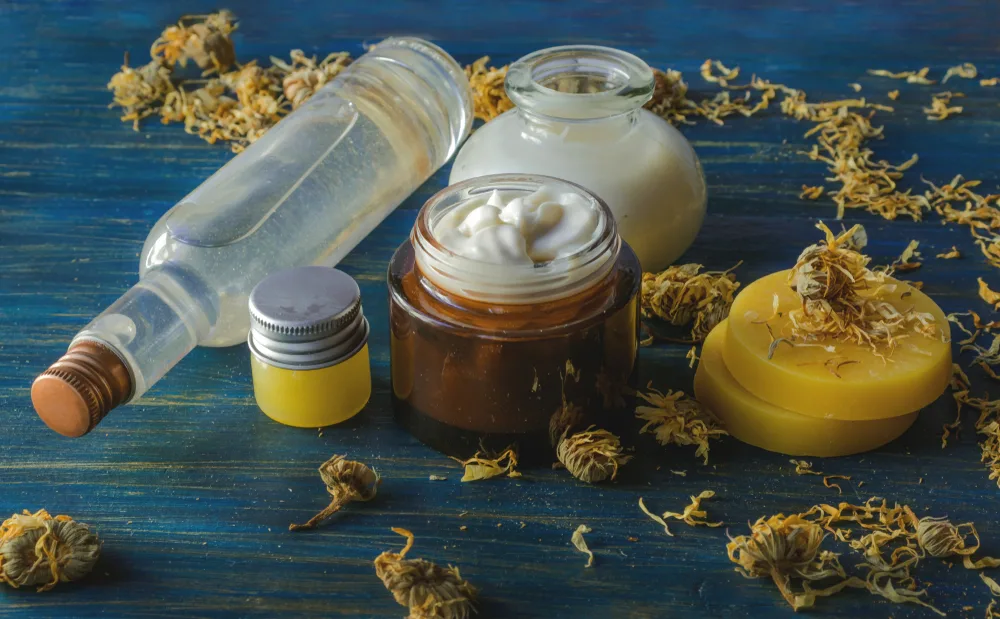
These flowers are also a great ingredient to include in a sugar scrub. A scrub can help to exfoliate skin and leave it smooth and glowing.
By adding calendula to your scrub, you can benefit from its moisturising, soothing and healing effects.
Learn how to make this useful scrub by following the link below.
Calendula Sugar Scrub @ homespunseasonalliving.com
12. Natural Deodorant
If you are trying to move away from harmful products, you may have struggled to find a natural deodorant that actually works for you.
Making your own natural deodorant can be a great way to go greener. And this recipe, including calendula, is one that actually will do the job.
Calendula is included for its anti-microbial properties, which help to cut down on the bacteria that cause smells.
Herbal Deodorant @ theherbalacademy.com
13. Infused Facial Toner
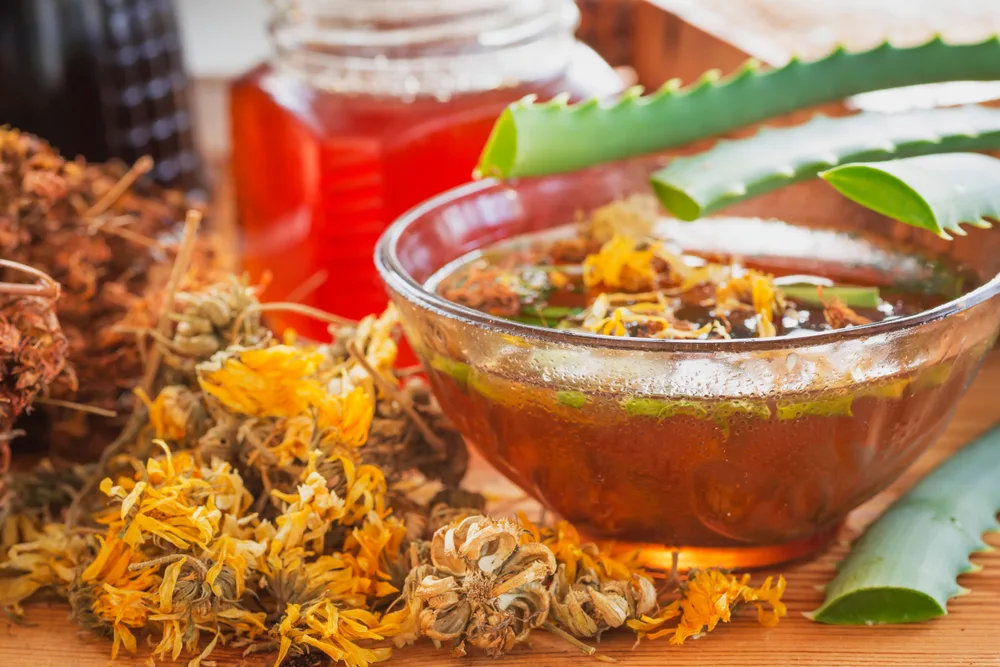
Calendula tea is used as the base for this facial toner. ¼ cup of dried, organic calendula flowers are steeped in 6 oz of distilled water. Then 1 tablespoon of aloe juice is added.
The toner is hydrating, slightly astringent, anti-inflammatory and, thanks to the calendula, promotes skin healing.
This natural recipe is gentle enough for daily use.
Facial Toner @ growingupherbal.com
14. Lip Balm
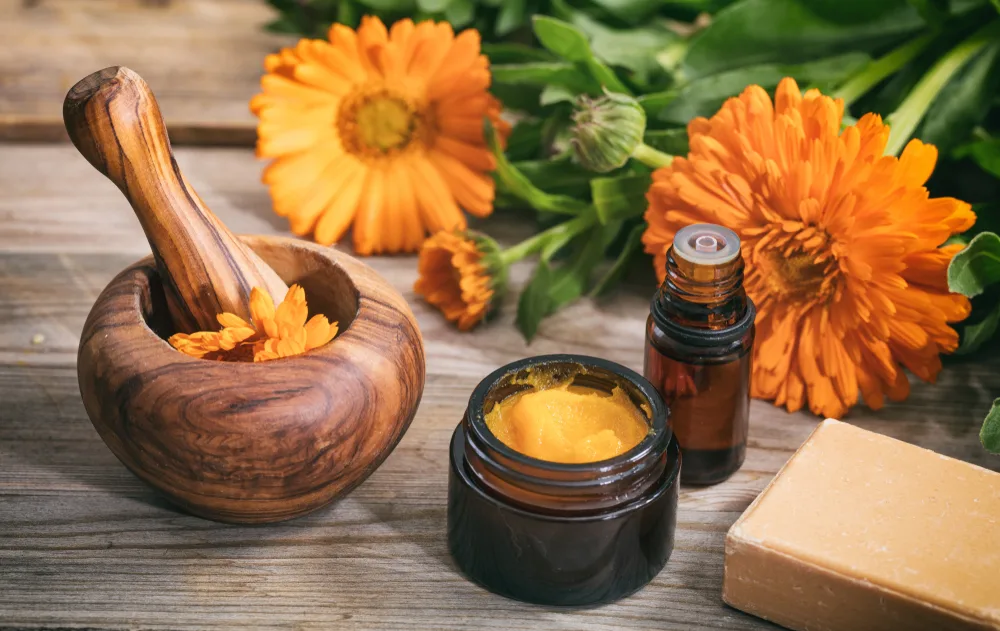
Sun, winds, chill and temperature fluctuations can leave our lips cracked and dry.
But unfortunately many of the lip balms available contain petroleum products and toxic ingredients that we should not really be putting near our mouths.
The solution is to make your own, and fortunately it is relatively simple and easy to do so. Calendula is used in a wide range of DIY lip balm recipes, including the one at the link below.
Quick and Easy Calendula Lip Balm Recipe @ thepracticalherbalist.com
15. Calendula Hair Rinse
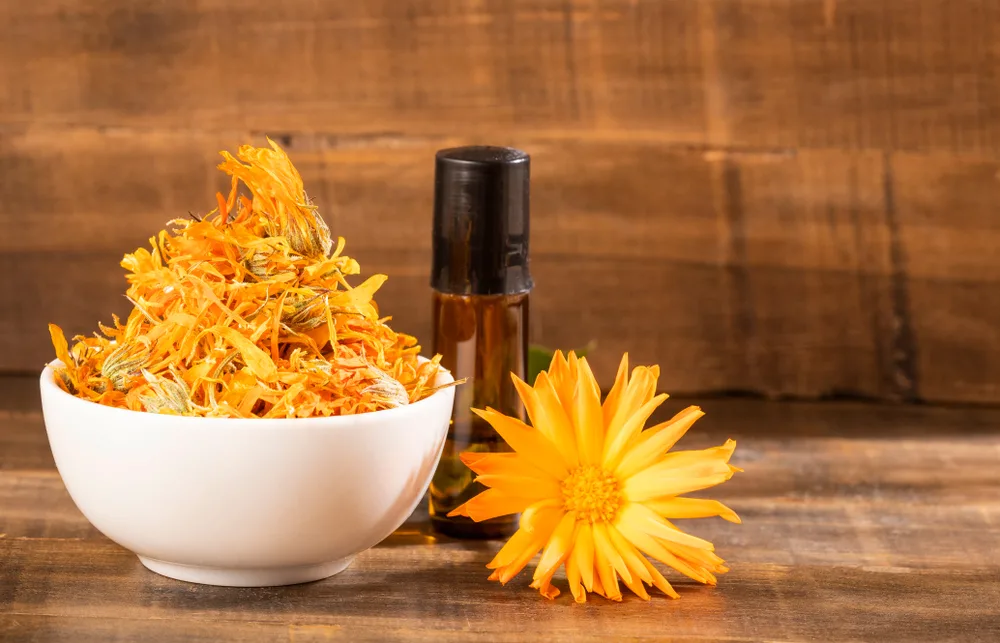
Calendula can also be great for your hair, as well as your general health and your skin.
There are a great many recipes that allow you to free yourself from commercial shampoos and conditioners and a natural hair rinse using calendula could be a great option.
Calendula is particularly beneficial for bringing out the golden tones in blonde or lighter hair, and also works well in mixtures to balance hair that is very oily or very dry.
DIY Herbal Hair Rinses @ pronounceskincare.com
The examples given above are just some of the many ways to use the calendula that you grow in your garden.
With a little effort and imagination, you are sure to find a range of other recipes as you experiment with bringing out all the many beneficial properties of the plant.
So next year, why not expand your growing efforts, and plant and use calendula where you live?
How To Dry Calendula
Many of the recipes above call for dried calendula. It’s really easy to dry your calendula flowers at home to use all year round.
Take a look at our article sharing two ways to dry your fresh herbs at home.
Pin This To Save For Later
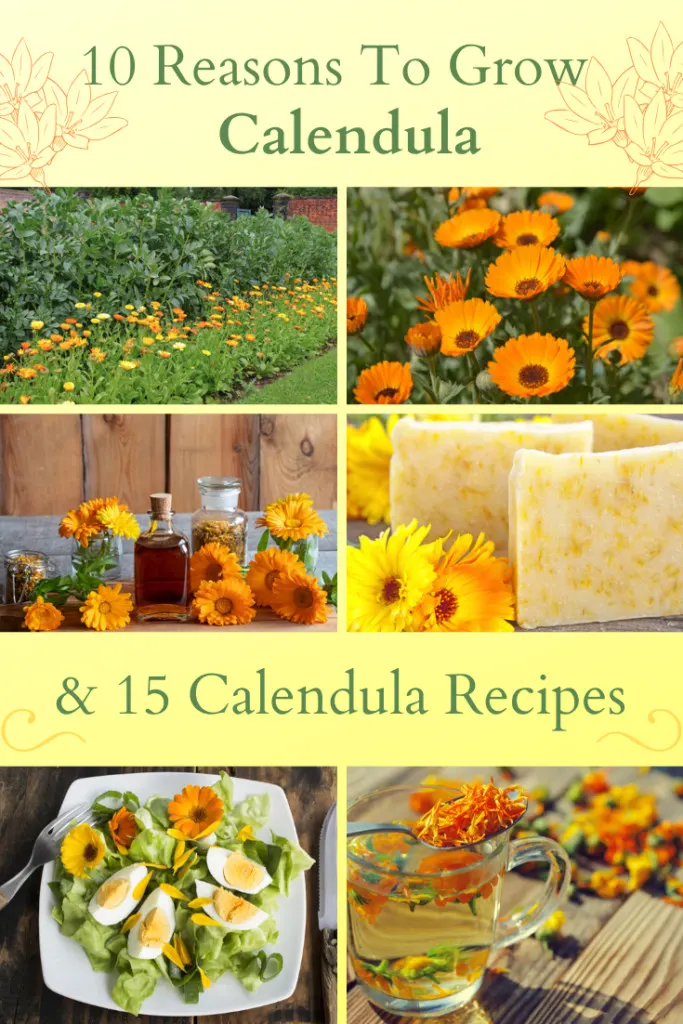

Get the famous Rural Sprout newsletter delivered to your inbox.
Including Sunday musings from our editor, Tracey, as well as “What’s Up Wednesday” our roundup of what’s in season and new article updates and alerts.


